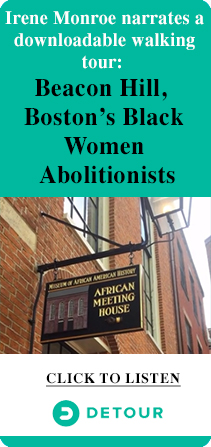I now have had ample time to recover — from both shock and awe — from the Supreme Court’s historic decisions announced in the final week of June.
My awe moment was Wednesday, June 26. It was a great day for me as a lesbian American. Historic decisions in both United States v. Windsor and Hollingsworth v. Perry were announced. Not only was DOMA finally struck down but so was California’s anti-gay Proposition 8, effectively.
In a 5-4 decision the progressive and moderate justices of the Supreme Court ruled Section 3 of DOMA unconstitutional, declaring it “a deprivation of the liberty of the person protected by the Fifth Amendment.” Finally all same-gender married couples will be afforded the same 1,000-plus federal protections and benefits that opposite-gender couples are afforded.
The proponents of Prop. 8 were finally told to cease and desist, meaning that legally, they no longer have a homophobic leg to stand on, in terms of their anti-gay and obstructionist antics, to appeal lower court rulings. California’s same-gender couples no longer have to do an anxious and cautious walk to the altar worrying about state rulings yo-yoing them around.
My shock moments are Monday, June 24, and Tuesday, June 25.
That Monday, the Supreme Court, in a surprising 7-1 ruling, sidestepped the hot-button issue of race in America by throwing the Fisher v. University of Texas case back to the lower courts for reconsideration.
The present-day argument against employing race-conscious admission policies as a pedagogical benefit for diversity is being usurped, at least in Texas, with debates that class-conscious admission policies would best achieve racial diversity. Texas’ top 10 percent law purports to guarantee Texas students who graduated in the top 10 percent of their high school class admission to any public university in the state. This policy works well, Texas alleges. But Texas omits telling you why: Their neighborhoods and, thus, their high schools are as unabashedly (if unofficially) segregated in 2013 as they were in 1954, when the Supreme Court’s historic Brown v. Board of Education ruling deemed segregated schools unconstitutional.
And that Tuesday, the Supreme Court hit with another hard blow. In a 5-4 vote from a glaringly ideologically divided court, the lifeline and heart and soul of the historic 1965 Voting Rights Act was gutted.
The court ruled that Section 4 of the VRA, the provision that indicates which parts of the U.S. must have changes to their voting laws cleared by the federal government or in federal court, is outdated. Section 4 long protected the voting rights of African Americans and other people of color in regions that historically disenfranchised them through discriminatory voting laws. The ruling is based on a fictive “post-racial” premise that racial minorities in the South no longer confront discriminatory barriers to voting. When passed, the 1965 VRA applied to nine whole states, mostly in the South — Alabama, Alaska, Arizona, Georgia, Louisiana, Mississippi, South Carolina, Texas and Virginia — as well as several other counties and townships.
But voter suppression is alive and well today.
Just last year, Florida deliberately reduced days available for early voting, making it difficult for voters to cast their ballots if they’d relocated to different counties within the state.
And in Maryland, the Republican Party’s 2010 gubernatorial candidate, Bob Ehrlich, hired a political consultant who had advised that “the first and most desired outcome is voter suppression” via having “African-American voters stay home.”
As a member of one of the early generations to benefit from the gains of the African-American civil rights movement of the 20th century, these Supreme Court rulings hit hard. Many of us in the LGBTQ community are outraged, but Jo Davis, a GLAD board member and a beloved ally to greater Boston, knows the reality of voter suppression firsthand. She wrote in an email blast, “This ruling was an enormous setback for the hard-fought for civil rights gains of the past. My home state of Alabama is one of those states that continues to try to block voting access, but those efforts has been substantially hampered by the provisions contained in the VRA.”
While many of us would like to think that voter suppression only happens in the South, let me disabuse you of that notion by mentioning the scores of counties and municipalities in the North, like New York City’s boroughs of Manhattan, the Bronx and Brooklyn (my borough), that were also covered by Section 4 of the VRA and will now be greatly impacted.
If the Supreme Court thinks that we’re in a post-racial country, it only needs to read Huffington Post blogger Judith Brown Dianis’ “Top 10 Voter Suppression Moments of 2012″ and bear in mind that these tactics overwhelming affected people of color.
The Supreme Court’s rulings force LGBTQ people of color, like me, to reside a bifurcated reality in terms of full civil rights protections.
With advances such as hate crime laws, the repeal of the military’s “don’t ask, don’t tell” policy, the legalization of same-sex marriage in many states, and the death of DOMA and Prop. 8, and with homophobia viewed as a national concern, the LGBTQ movement has come a long way since the first pride marches four-plus decades ago. Many note the perceived distance that the LGBTQ community has traveled in such a short time, moving from a disenfranchised group on the fringe of America’s mainstream to a community now on the verge of full equality just since the ’60s. But not all members of our community have crossed the finish line.
Will the LGBTQ community help those of us, like me, who have been left behind?



